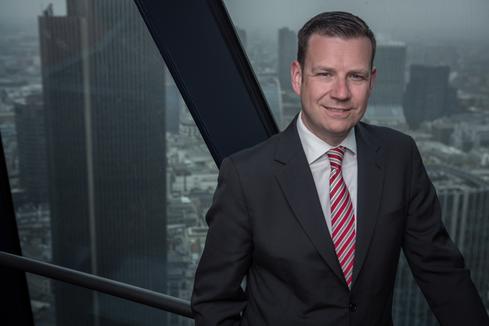Mobile Computing In Essex County: Work Is Something You Do, Not Somewhere You Go
Interop London speaker Will Fensom, Head of Architecture, Security, and Configuration Management for Essex County Council, talks about his strategy.

There are plenty of benefits -- and potential pitfalls -- of employee mobility in the enterprise, but the public sector is going through the same transformations. Often with tens of thousands of employees to consider, as well as a customer-base that rivals that of even the largest corporations, local councils are quickly realising the benefits that employee mobility brings.
We talked to Will Fensom, Head of Architecture, Security and Configuration Management for Essex County Council, about his ambitious mobility plan.

InformationWeek: Tell us about Essex County Council’s employee mobility journey; where are you now compared to a few years ago?
Will Fensom: Essex County Council serves 1.5 million residents. We have over 10,000 employees in 160 locations. We basically had a requirement to deliver a fundamental shift in the way that our employees communicated. So, when the programme started, we still very much had a legacy view. Everyone had a desktop or a laptop; they all had their own assigned desks; and everyone came to the office -- very traditional. Nobody worked from home. Nobody was mobile or flexible at all.
[To hear more on this topic, register for your free tickets to Interop London.]
The whole theory of the mobility project was to enable the concept of “work is something you do and not somewhere you go.”
The programme itself was quite ambitious; it was large scale. The goal was to deliver a fit-for-purpose, standardised programme to our 10,000 users, and we wanted to give a choice in that selection, as well. So we actually went from, “You’re getting a laptop,” or, “You’re getting a desktop,” to having a choice. We’ve now gone to having a choice of three sizes of laptops, which is large, regular, or ultra-portable, and we’ve introduced a Windows 8 tablet as well.
At the same time, we were also moving our voice platform from the traditional, legacy-style handsets to a fully integrated Lync (Skype for Business) system. So we’ve gone whole hog, and replaced all of our telephony handsets with MS Lync.
IW: Are you seeing a decrease in shadow IT, with people bringing their own devices into your ecosystem?
WF: One of the things about working within the council is that shadow IT is very difficult for anyone to start using. It’s an exceptionally locked-down environment, so whilst people might want to bring in an iPad, there is no Wi-Fi network that they can connect it to. They might want to work on their own device, but they can’t actually connect them into the systems, so it’s a very controlled, regulated environment.
But what we’ve managed to achieve is to remove the desire for shadow IT by providing fit-for-purpose, better IT than they could probably bring in from their own devices.
IW: Tell us about some of the technologies that you’ve got in place to ensure this secure environment.
WF: We have a number of mechanisms in place. Of course, we have all the standard user controls around authentication. Internet access is fully controlled by locked-down proxy servers; there is no direct route to the Internet. All of our Wi-Fi is based on certificates, so you can’t just walk in and connect a device into the network.
We’re actually implementing 802.1x across our estate, which will also stop anyone connecting a physical device to the network. So, it is a very secure environment and that’s one of the things that we need to comply with because we are connected to the PSN network, which has a very robust set of requirements around it.
IW: What are some of the other challenges that you have faced?
WF: The technology side is actually the easier part. The more complicated side is the user experience, or the user journey. We had to have a full cultural engagement and cultural change programme running alongside this because one of the goals that we had was to change our headcount-to-seating ratio. That, we’ve achieved. We’ve achieved a two-to- one consolidation ratio on seating, so we have a two-to-one desk ratio, with the expectation that the majority of our workers will work remotely, or work from other locations.
IW: Is the project completed?
WF: It is completed. We’re onto the next one already. We have our highest ever user satisfaction ratings. We are now seen as an enabler across the business -- rather than pointed at as the blockers.
IW: So, Essex County Council is ahead of the curve, in terms of local governments?
WF: I moved into our local council quite recently, and actually, considering where I’ve come from - some fairly large corporates - Essex County Council, in terms of its end-user computing, is ahead of many large private sector customers.
IW: If start-ups are agile, and large corporates are slow and cumbersome, one might assume that local government is practically stationary, right?
WF: You would normally assume that, and in some cases, there are a huge number of internal hurdles to overcome with any programme within public sector. But, at the same time, we delivered ahead of schedule, we delivered under budget, and we delivered significant cost savings, cutting our cost to serve by 50%. So it is possible.
IW: The rural nature of your county invariably throws up some additional challenges in terms of communications. What did you do to address these?
WF: It does indeed. We had what’s known as our next generation network roll-out going on at the same time. This was a partnership between Essex County Council and Daisy Updata Communications Ltd. This was to provide a fit-for-purpose, next generation, public sector network across Essex.
Coupling that with the superfast Essex broadband rollout, which is going on at the moment, that’s adding value both to our users and to our residents. This is one of the key differentiators around the programme. It was not just an IT project, it was a range of initiatives with partners working together to deliver both to the residents and to the employees of Essex County Council.
IW: Sounds like a lot of moving parts.
WF: There are an awful lot of moving parts, yes, and they haven’t stopped moving, to be honest, because once you deliver success you grow on it. And the next stage from this programme is our move to the cloud; so we are currently in the process of implementing cloud and hybrid clouds for Essex. We’re going to be moving off our legacy estate onto that hybrid cloud over the rest of this year. So, this isn’t “you’ve done it and you’ve stopped.” We are continuing to innovate across Essex, and we are continuing to deliver cost savings.
 Interop, the flagship event of London Technology Week, takes place at ExCeL London June 16 to 18 2015. Find out more here.
Interop, the flagship event of London Technology Week, takes place at ExCeL London June 16 to 18 2015. Find out more here.
About the Author(s)
You May Also Like
How to Amplify DevOps with DevSecOps
May 22, 2024Generative AI: Use Cases and Risks in 2024
May 29, 2024Smart Service Management
June 4, 2024







